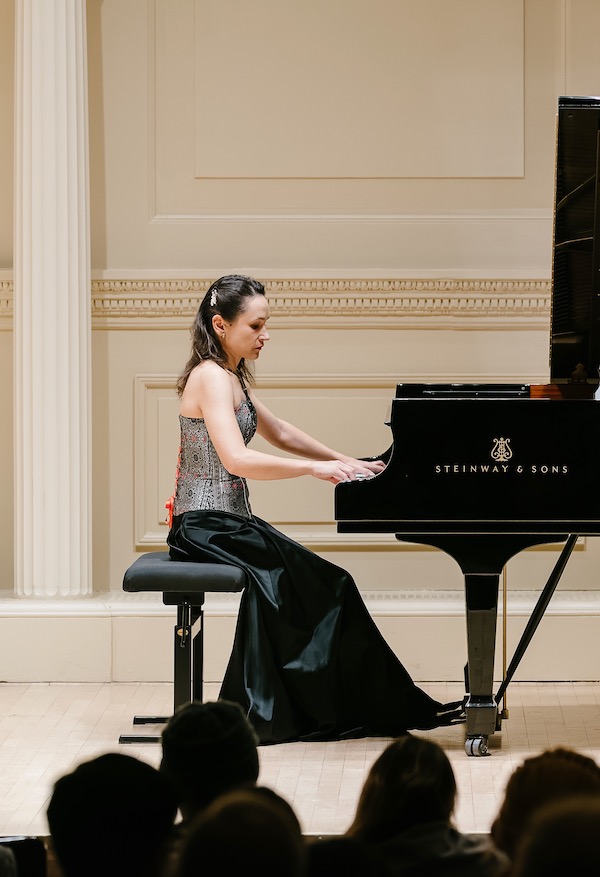Polgár delivers thrilling, fitfully exhausting playing of Liszt, other Hungarians

Pianist Eva Polgár, who appeared as part of a “Carpathian Impressions” event last month at Weill Recital Hall, was back on the same stage Thursday night, this time as a solo performer.
Presented by the Hungary Foundation, for which Polgár is the Cultural Ambassador of the Year, and the Los Angeles International Liszt Competition, the program was directly connected to what she played in November—exploring some of the classical music legacy of Eastern Europe.
That meant Liszt and Kodály, heavy with the former, both heard through works that differed from the earlier concert. There were also two contemporary pieces from Eastern European composers, performed in their New York City premieres.
Polgár has plenty of technique and strength to handle Liszt, and played dexterity-challenging pieces like Les jeux d ‘eaux a la Villa d’ Este and the Concert Étude No. 2 in F minor, “La leggierezza.’’ These were fluid, cleanly articulated performances with impressive legato phasing in the most rapid passages. Crashing chords were extremely crisp, with edges sharp enough to slice.
This was intense stuff, at times thrilling and other times exhausting. The exhaustion wasn’t due to the playing but the selection; Liszt’s desire to show what can be done with two hands on the piano can fatigue the ear quickly and there were few contrasts in his works or from the other music. For the first half, especially, this was an experience that trended toward a sameness.
The bombastic Sursum Corda was first, followed by a contemplative performance of Le mal du pays, then three of Kodály’s Seven Pieces, Op. 11 followed Les jeux d eaux. The moods alternated, but Liszt’s personality overpowered the more sublime sensations, even in Le Mal du pays. The Kodály Pieces, especially the third in the set (“it rains in the city”), were a fine alternative, rooted in the same impressionistic concept but with a leaner and more introverted approach.
Polgár’s strength came out easily, perhaps too easily, as sheer muscularity became the default approach. She played Kodály’s Dances of Marosszék to end the half. This is a fascinating work that slides back and forth between sobriety and wildness, but its weight and length added to the sensation of being overwhelmed.
László Dubrovay’s Hommage à Fellini (The last dream of a clown) and Arsentiy Kharitonov’s Concert Étude, op. 44, No. 5 sandwiched Liszt’s Étude on the second half. Both of the contemporary works had roots in 19th-century romanticism, but expressed more ambiguous sensibilities and displayed a modern approach to harmony.
Both works were impressive and drew greater depth in Polgár’s playing. Dubrovay’s waltz at first seems too close to the work of Fellini’s great colleague, Nino Rota, but the combination of a charming, free line in the right hand and harmonies in the left that both opposed and unsettled it just needed some time to play out. As they did, the music grew in intrigue and satisfaction.
Kharitonov’s Étude was another highlight, with harmonies that, once again, seemed to set up an internal argument, along with a feeling of free expression and an aesthetic logic that came off as both confident and self-questioning. There were both compelling internal monologue pieces.
Liszt’s Legend No. 2, St. François de Paule, was the concluding work, a return to extroverted bigness. Polgár’s playing was stalwart, even as the program begin to wear, and only in the final moments did she show any fatigue. She introduced the encore by admitting she was tired—understandably so—but could still use her index fingers for Kharitonov’s inventive and surprisingly lush Romance for Two Fingers. In the hands of a skilled pianist like Polgár, two fingers produced a galaxy of sounds.